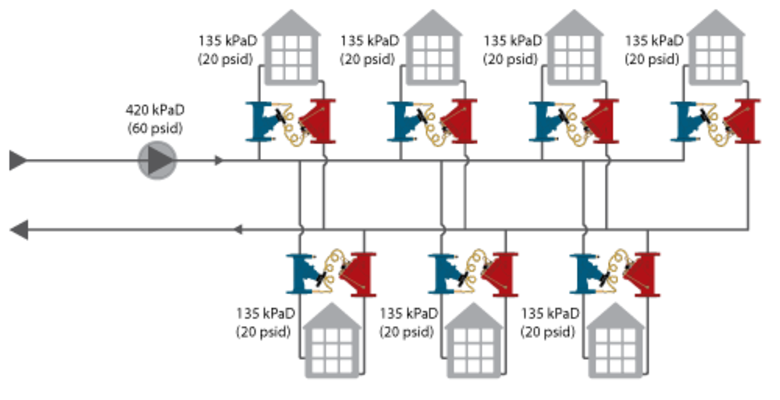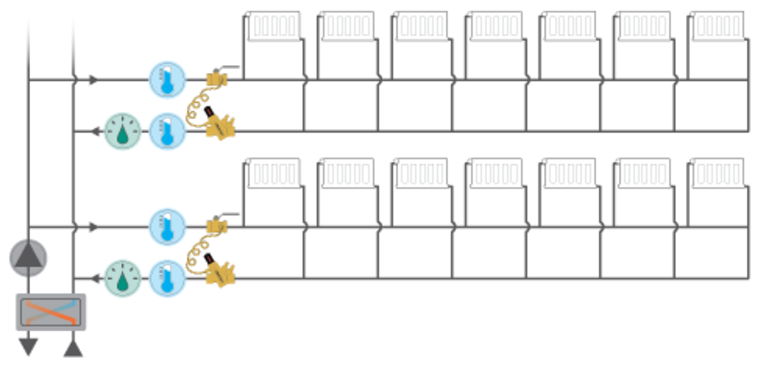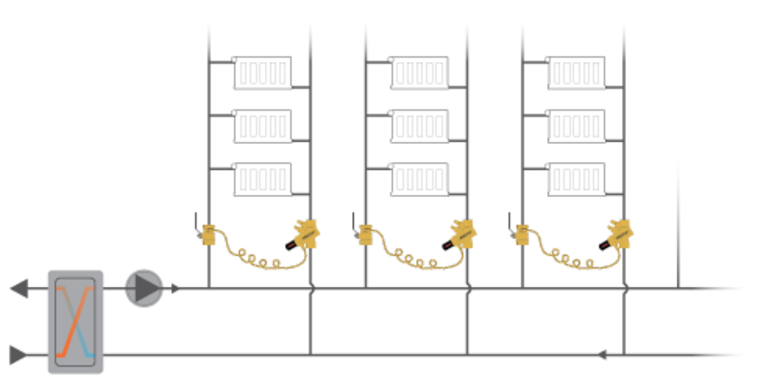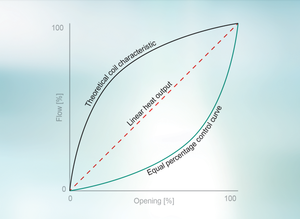Differential Pressure Controllers as Zone Protectors
By Christina Cohr, CCO, M.Eng (Export) and Jesper Fischer Nielsen, Application Engineer, M.Sc (EnergyTech), FlowCon International ApS, Denmark - 08.2019
In a typical building or multiple buildings, the load will vary in different zones throughout the day. If the system is not balanced correctly, pressure fluctuations will cause problems such as discomfort and noise disturbance and in addition result in unnecessary high operation costs.
Larger projects are often seen spread over several buildings. In case of one central plantroom covering the premises, the same problems as described above may be experienced.
Recommendation
FlowCon recommends installing a differential pressure control valve (DPCV) as protector for each zone. For smaller zones within the same building, it could be any of the FlowCon insert-based DPCVs – FlowCon EDP, SDP or ADP – and for multiple buildings the recommendation will be the FlowCon PIM-DP™. These zone protectors will protect each zone or building and make sure that the zone will not see higher differential pressure than design. At the same time, it will optimize system efficiency as each zone will always be at design pressure level regardless of pressure fluctuations in the overall system.

Without zone protection DPCVs, a project may experience noise as an annoying issue due to too high pressure at the zones closest to the pump.

Description
With DPCVs and correct partner valves installed, they will make sure that each zone will see a controlled constant differential pressure. The partner valve is mounted in the supply line and the DPCV in the return line. The two valves are connected with a capillary tube. As the load varies between the different zones, the pump will modulate in order to meet system requirements. The DPCV will detect the pressure changes through the capillary and will start to regulate by either opening or closing. This dynamic movement is done by the internal spring which acts together with the DPCV-diaphragm. Consequently, the DPCV ensures that a constant differential pressure is applied across the zone.
Conclusion
The benefits of using DPCVs as zone protectors are many. First and foremost, maximum differential pressure across the controlled zone is ensured and consequently annoying noise disturbance is avoided. Additionally, the residents will encounter a more stable and pleasant room temperature and last but least the operation costs will be kept to a minimum.
Other Typical DPCV Applications


Download Article
Latest FlowCon Articles
See all
Sustainability and PICVs
Sustainability in HVAC is no longer optional - it is fundamental to responsible system design
Importance of Control Curves in PICVs
Equal percentage control vs. linear control – which is better when and why?
Rangeability and Turn Down Ratio - Update
Definition and use of Rangebility, Resolution and Turn Down Ratio in FlowCon PICVs



